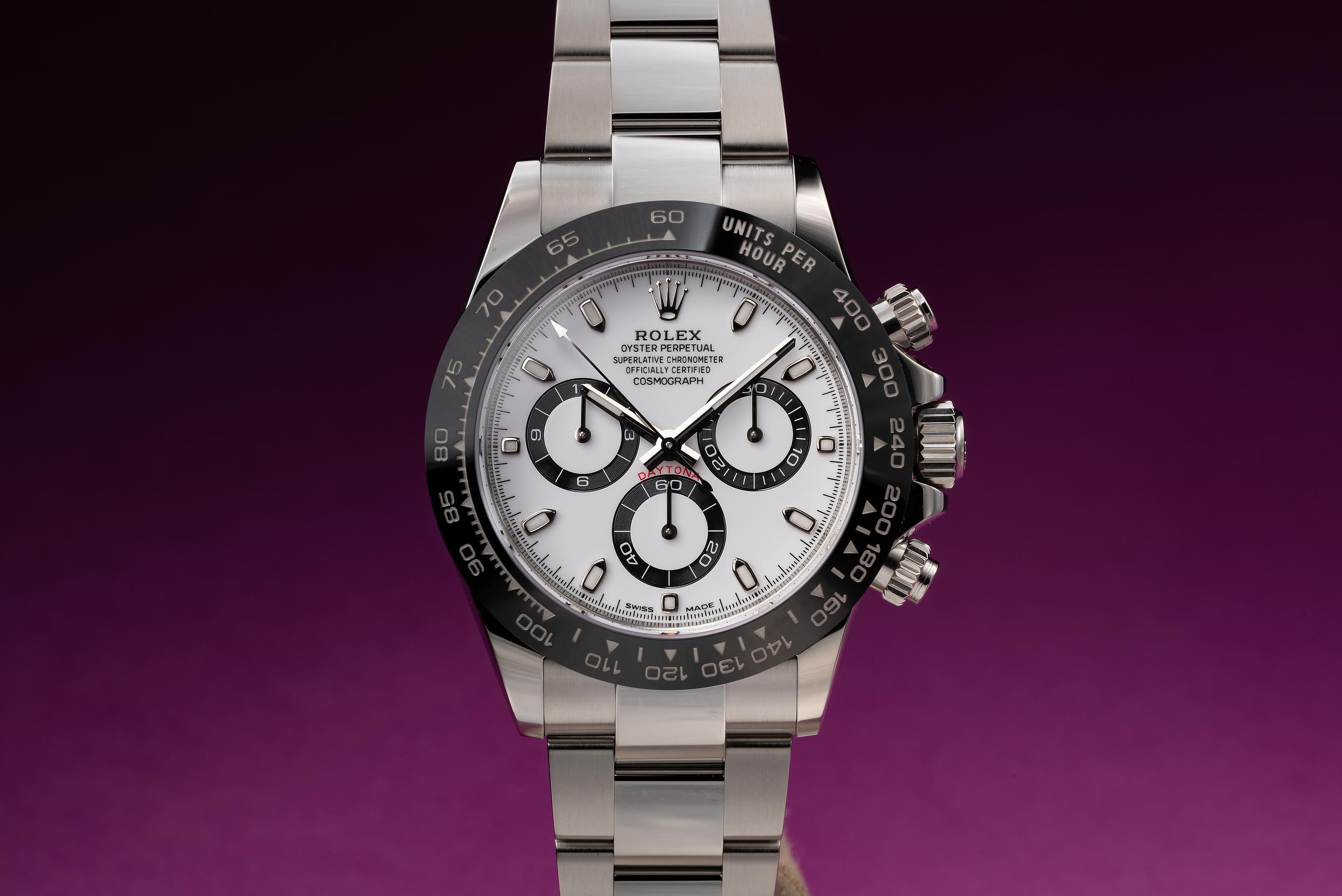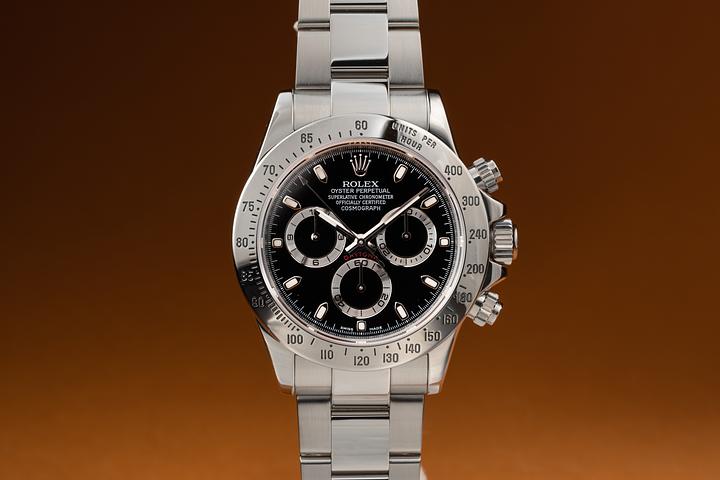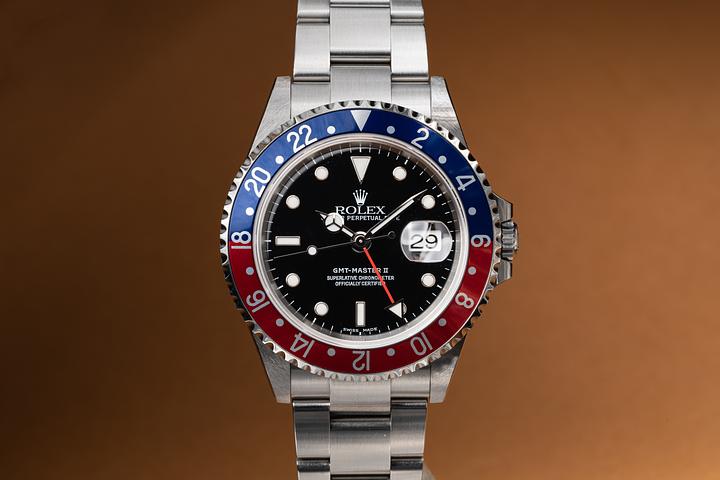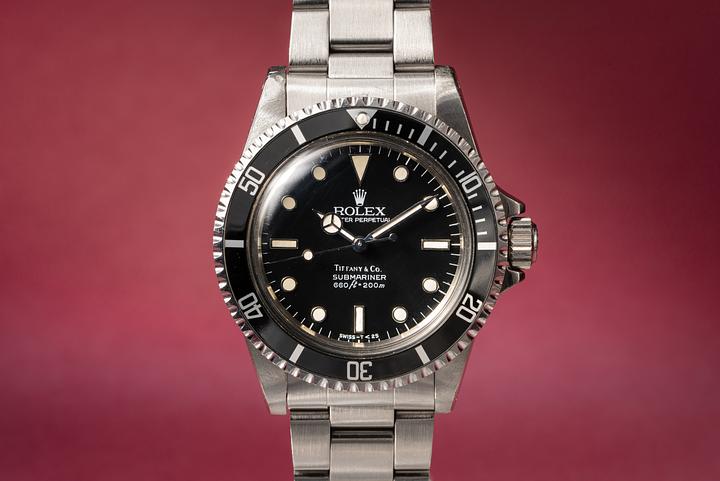Why the Rolex Daytona Is the Most Wanted Watch Alive

Why the Rolex Daytona Remains an Icon in the Swiss Watch Industry
Few names in Swiss horology stir up the same heady combination of heritage, prestige, and raw mechanical excellence like the Rolex Daytona. Launched in the early 1960s and now one of the most sought-after timepieces in the world, the Daytona is more than a chronograph—it's a symbol. But what exactly makes the Rolex Daytona so popular? Why does it hold an untouchable status in both the luxury market and the hearts of watch aficionados? Let's sift through its motorsport origins, mechanical evolution, cultural significance, and the ever-present aura of exclusivity built carefully over decades.
The Beginnings of a Racing Legend
Rolex introduced the Cosmograph Daytona in 1963, designed explicitly to meet the demands of professional racing drivers. Its name honored the high-speed Daytona International Speedway in Florida, where Rolex had formed an early relationship. This was more than a clever association—it set the tone for the model's identity. Built as a tool watch, the Daytona featured a tachymetric scale on the bezel and chronograph functions, allowing drivers to measure their average speed and lap times with clarity and precision.
Back then, manual-wind chronographs weren’t exactly flying off the shelves. Early Daytonas used the Valjoux 72 movement—a solid movement but not yet revolutionary. It wasn’t until years later when the Daytona became automatic, that the legend really caught fire. Even still, those early references, once ignored in favor of more fashionable pieces, now sit on grail lists, fetching astronomical prices at auction. Timing, as ever with Rolex, is everything.
The Zenith Years: Momentum Builds
In 1988, Rolex revamped the Daytona by introducing Reference 16520—equipped with an automatic movement based on the Zenith El Primero. Rolex reengineered the movement to create what is known internally as the Caliber 4030. This wasn’t just a functional improvement; it was the moment modern Rolex collectors began to pay serious attention. And then something curious happened. Rolex, known for mass production, began limiting availability. Suddenly, everyone wanted a Daytona—but not everyone could get one. As demand grew, so did mystique.
This combination of improved movement performance, updated design (sapphire crystal, larger case, glossy dial), and controlled scarcity created the first wave of real cultural buzz surrounding modern Daytonas. Limited supply wasn’t accidental. Rolex, ever mindful of brand image, learned that restraint creates value. The waiting lists began, and the Daytona hype started its long, enduring climb.
The Paul Newman Effect: Rarity Meets Celebrity
It’s impossible to talk about the Daytona without discussing Paul Newman. The celebrated actor and race car driver famously wore a specific Daytona reference with an exotic dial—what collectors today call the "Paul Newman dial." At the time of production, these dials weren’t popular, which meant fewer were made. Decades later, Newman’s own Daytona sold for over $17 million at auction, shattering records and cementing the model's place in pop culture.
This one watch, worn casually by one man, did more for the Daytona's collectible value than possibly any marketing campaign could ever manufacture. But again—Rolex didn’t push this story. The brand let collectors, historians, and enthusiasts build the legend. That organic growth, driven by authentic interest and, admittedly, some speculative passion, has made early Daytonas and especially Paul Newman dials icons in their own right.
Modern Marvel: The Daytona Today
The current Daytona lineup—particularly the 116500LN with its black Cerachrom bezel—is among the most in-demand watches on the planet. Introduced at Baselworld 2016, it's powered by Rolex’s in-house Caliber 4130, a self-winding mechanical chronograph movement launched in 2000. The 4130 offers fewer components than other chronographs, improving reliability and serviceability. Performance-wise, it’s COSC-certified and features Rolex’s proprietary Parachrom hairspring, providing greater resistance to shocks and temperature variation.
But it’s not just mechanics keeping the Daytona elevated. It’s the aura. Wearing one says something, but owning one—especially through an authorized dealer rather than the gray market—suggests you're part of a rare club. Even now, years after its launch, the 116500LN has waitlists spanning years. And Rolex isn’t ramping up supply. Because again, admit it—even if you don’t love that about them—you know it adds to the appeal. Everyone wants what’s hard to get.
Swiss Roots, Global Reputation
While the Daytona is often discussed in terms of collectability and celebrity, don’t forget it’s Swiss through and through. And that matters. Rolex, headquartered in Geneva, has long been known as one of the pillars of the Swiss watch industry. Even though Rolex isn’t a member of the Swatch Group or Richemont, it stands incomparable in stature. Their manufacturing process is vertically integrated—they design, develop, and produce almost every component themselves.
That includes the movement, bracelet, bezel, and even their proprietary gold alloys. This level of control allows Rolex to adhere to strict quality standards and continue evolving without sacrificing reliability. The Daytona, as their flagship chronograph, benefits from all of this. It represents the Swiss ideal: understated excellence, built to last. There’s an authenticity to it that even non-watch people can sense. That mix of artisan craft and mass appeal? That’s rare air.
Why the Rolex Daytona Will Stay Timeless
So yes, the Daytona is popular. But not by accident. It’s rooted in performance design, bolstered by limited supply, validated by icons like Paul Newman, and underpinned by Rolex’s unmatched engineering skill. It doesn’t scream. It doesn’t need to. That’s the brilliance. Whether you wear yours to measure lap times at Le Mans or just to feel something special in your daily routine—it delivers. Clean lines, chronometric accuracy, cultural pedigree—it’s the full package.
And while trends wax and wane, the Daytona seems immune. Swiss watchmaking is a centuries-old industry, and the Daytona has carved a legacy within it in just over 60 years. That’s impressive. That’s Rolex. And whether you're first in line or years into a waitlist—just knowing its story kind of makes it worth it.




